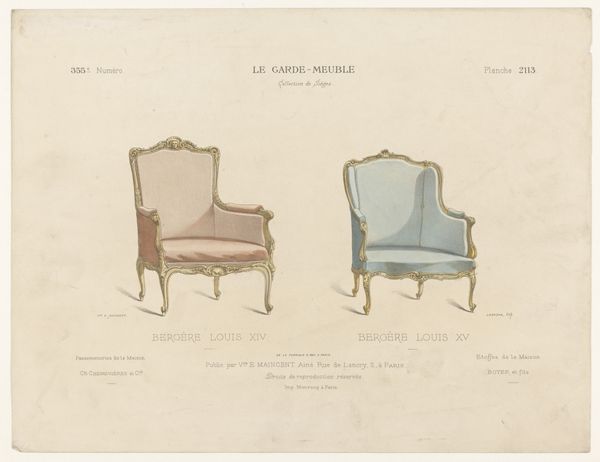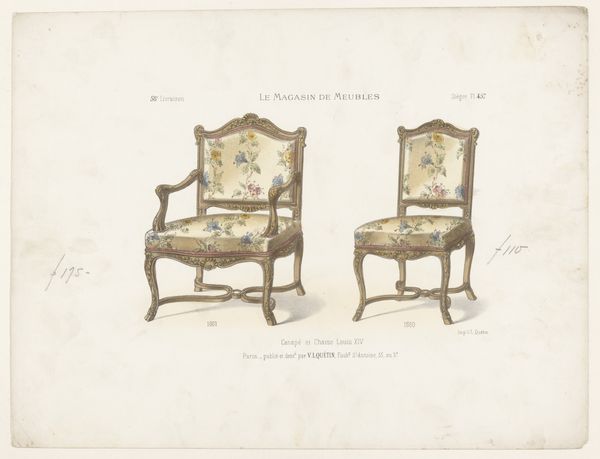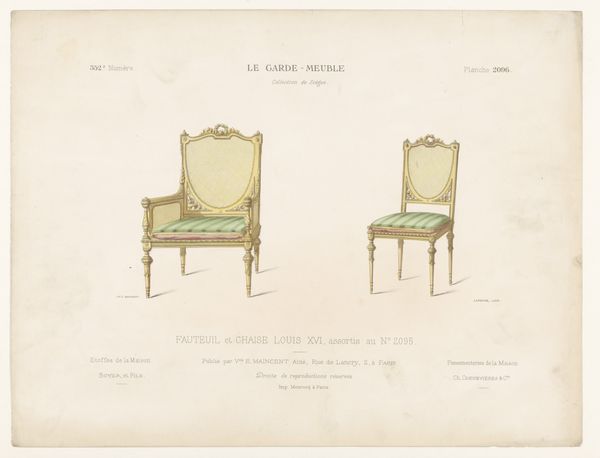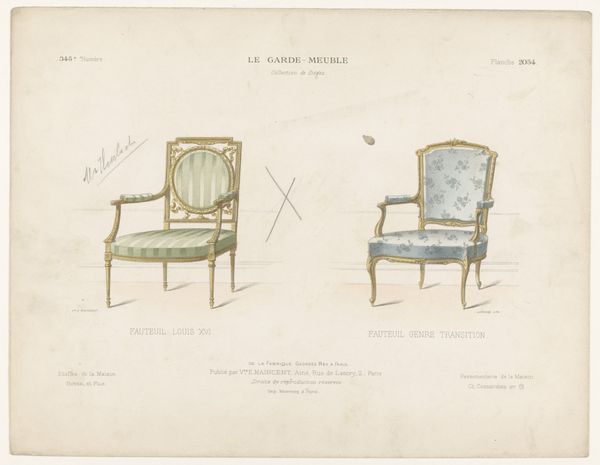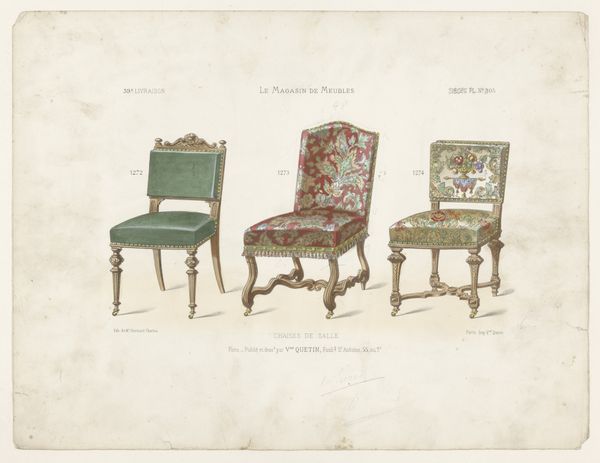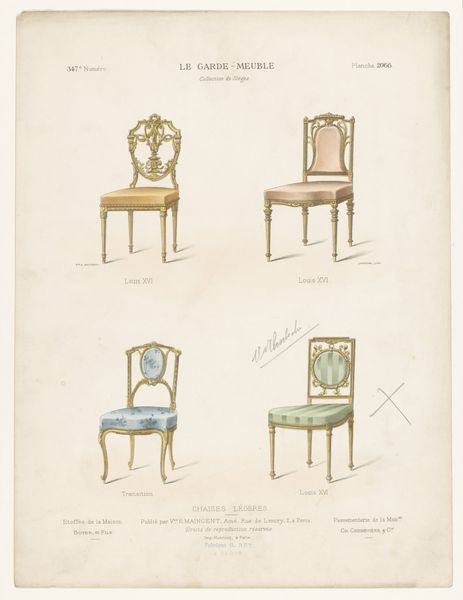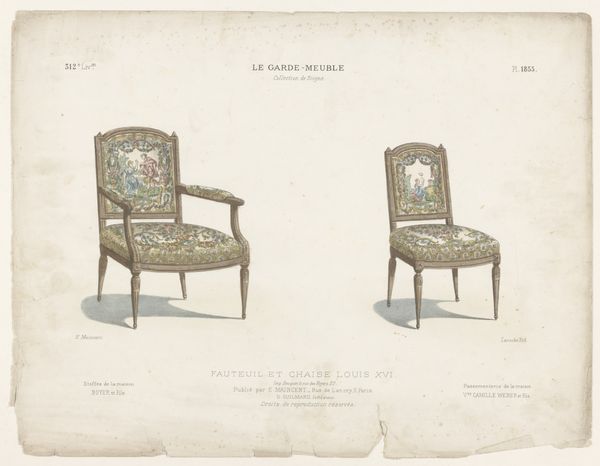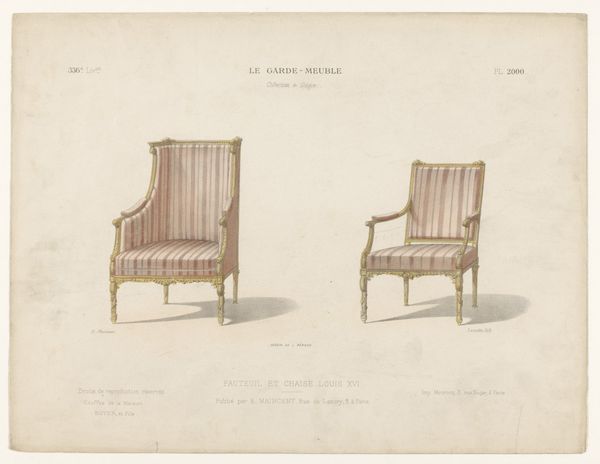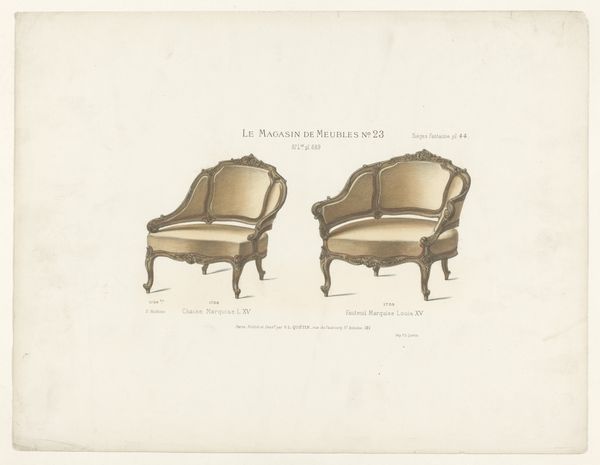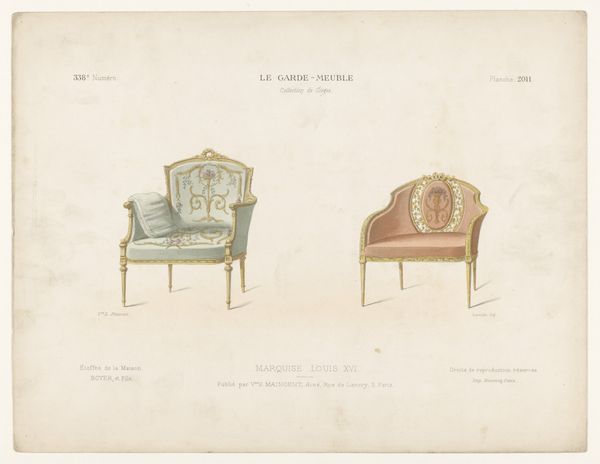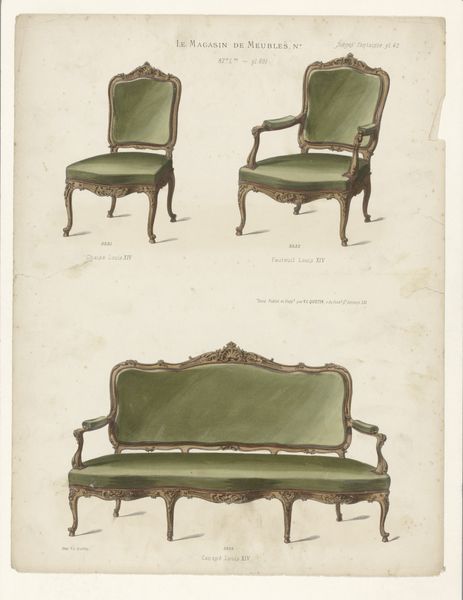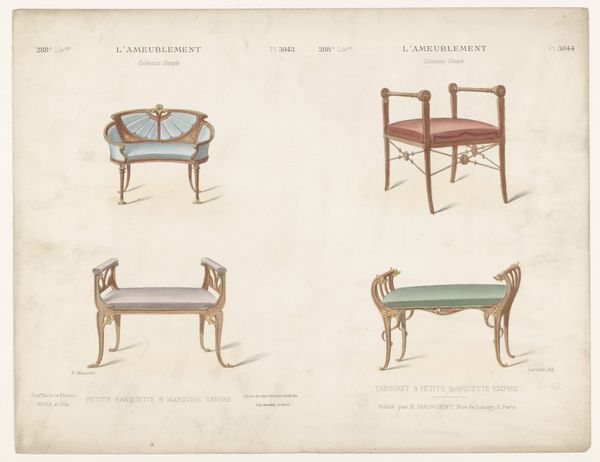
drawing, print, paper, watercolor
#
drawing
# print
#
figuration
#
paper
#
watercolor
#
decorative-art
Dimensions: height 275 mm, width 359 mm
Copyright: Rijks Museum: Open Domain
Curator: What an interesting find! This print, simply titled "Twee stoelen," or "Two Chairs," dates to the period between 1832 and 1877. It appears to be a decorative study done in watercolor on paper. Editor: My initial response is that they have such contrasting characters. The chair on the left is softer, more inviting somehow, in its form and muted, natural green, whereas the right one seems quite rigid, its blue rather somber. Curator: Indeed. Let's consider them through the lens of production and social context. These chairs aren't presented as mere objects, but as commodities—part of a larger system of furniture making for a specific consumer class. The decorative art style suggests a focus on aesthetics intended to elevate the owner’s status through careful decoration. Editor: Focusing solely on their visual forms, you notice a delightful tension. The sinuous, almost Rococo curves of the left chair offer a counterpoint to the stern, geometric lines of the blue chair. Semiotically, we can view this as a dialogue between tradition and a nascent modernity. Curator: I’d argue it speaks to more than just aesthetics. The production of such furniture involved workshops, specialized labor, the use of raw materials—timber, textiles, dyes. How would access to these resources shaped the design, the color choices, and ultimately, who could afford these pieces? Editor: But observe the precision of the rendering, the care taken to detail the texture of the upholstery, the sheen on the wood! Formally, each line contributes to a unified composition, one that attempts to capture a Platonic ideal of… chairness! Curator: Perhaps, but isn't the 'ideal' always culturally defined? This piece prompts us to investigate not only artistic skill, but also the historical dynamics of labor and consumption. It moves beyond 'chairness' to chair-as-status-symbol, embedded in socio-economic systems. Editor: Perhaps we can agree to disagree here. Ultimately, this print encourages close looking—an appreciation for design that still speaks to us today, no matter what its genesis. Curator: Absolutely! A beautiful, understated artifact reflecting complex networks of making and owning, leaving plenty to reflect on.
Comments
No comments
Be the first to comment and join the conversation on the ultimate creative platform.

